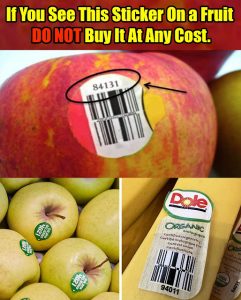
Deciphering the Enigma of Fruit Stickers: Unveiling the Mystery Behind Those Numbers
Have you ever found yourself peering closely at the small numbers printed on the stickers adorning your fresh fruits and vegetables, perhaps wondering what they signify? These seemingly innocuous digits, often overlooked during grocery shopping, hold a far greater significance than meets the eye. Beyond their basic function of aiding checkout processes, these codes, known as PLU (Price Look Up) codes, harbor a treasure trove of information vital for both consumers and merchants.
In this comprehensive exploration, we embark on a journey to decode the mysteries concealed within these unassuming stickers. From understanding the origin and purpose of PLU codes to unraveling the nuanced distinctions they make between different types of produce, we delve deep into the intricate web of data encapsulated within each tiny label.
At first glance, PLU codes may appear as nothing more than a string of random numbers, but beneath their surface lies a structured system designed to streamline the purchasing experience while offering invaluable insights into the products being bought and sold. As we peel back the layers of complexity, we uncover the significance of these codes in distinguishing between organic and non-organic produce, as well as in categorizing various types and sizes of fruits and vegetables.
Moreover, we shed light on the evolution of PLU codes, including the introduction of special prefixes such as the enigmatic “8,” originally intended to denote genetically modified organisms (GMOs). While the relevance of this prefix may have diminished over time due to limited GMO availability in the market, its potential significance remains a subject of intrigue, hinting at future developments in product labeling and categorization.
Unraveling the PLU Code:
Ever pondered the meaning of “PLU”? It stands for “price look up” and serves a vital purpose. These codes streamline the identification of produce during checkout, ensuring accurate pricing. But their utility extends further. PLU codes aid in distinguishing between organic and non-organic produce, as well as categorizing different varieties of the same fruit.
Decoding the Power of Nine:
PLU codes typically consist of four digits, strategically assigned to denote specific types or size ranges of fruits and vegetables. However, organic produce requires an extra layer of identification, employing five-digit codes that invariably commence with the digit “9,” followed by the familiar four-digit PLU.
For Ingredients And Complete Cooking Instructions Please Head On keep on Reading (>)
